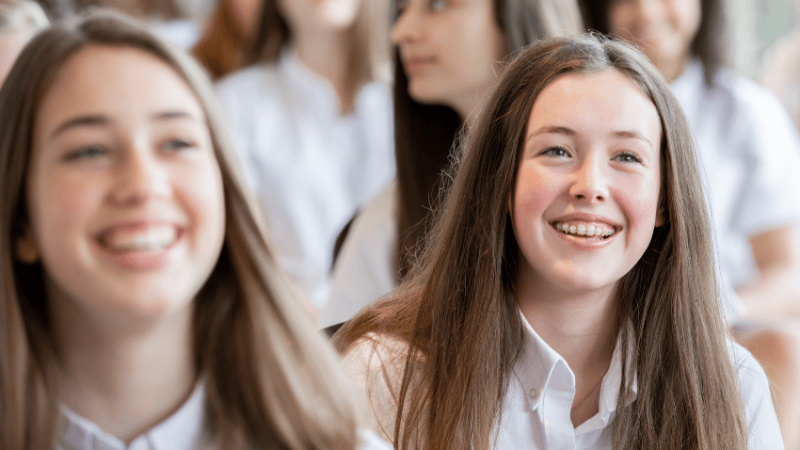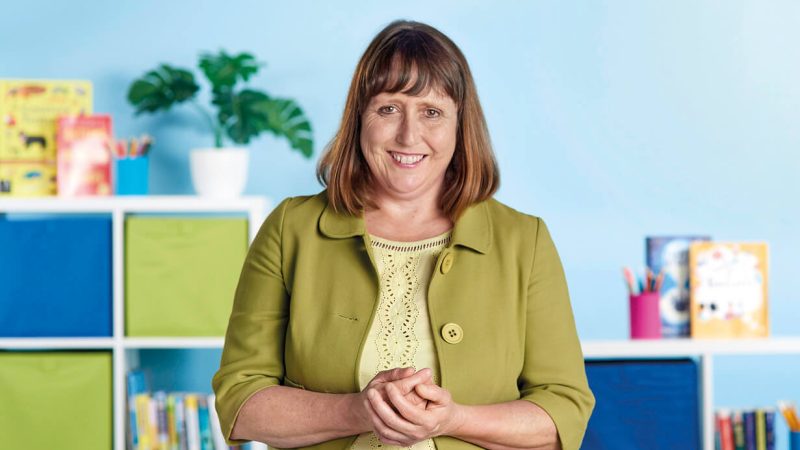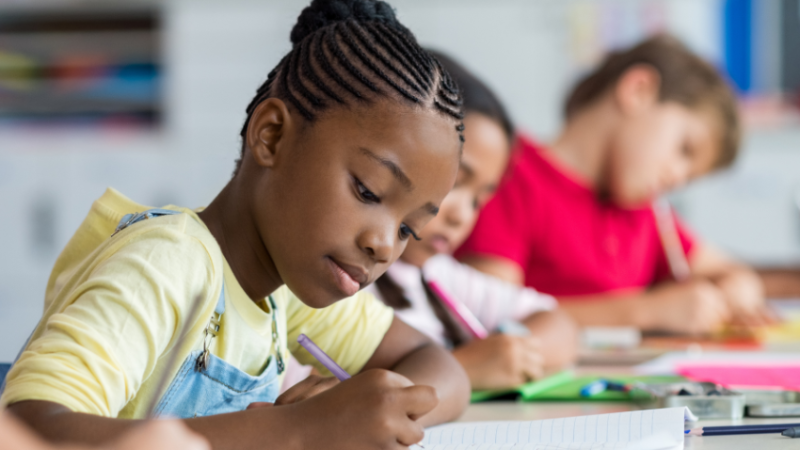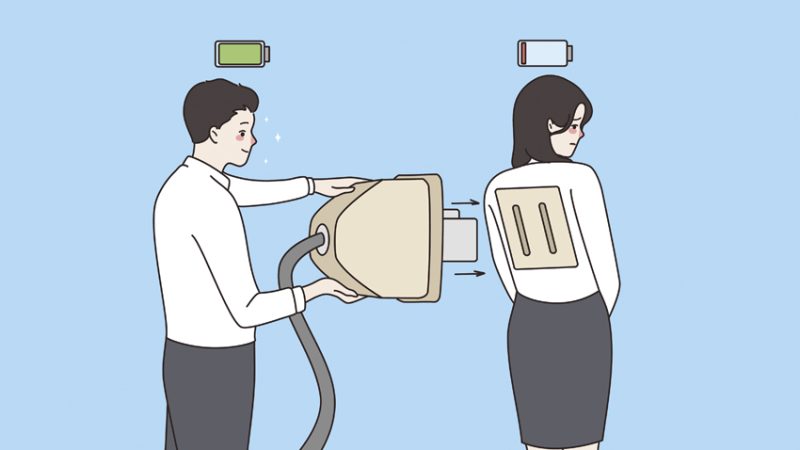New-Build School In Rhyl Has Technology At Its Heart
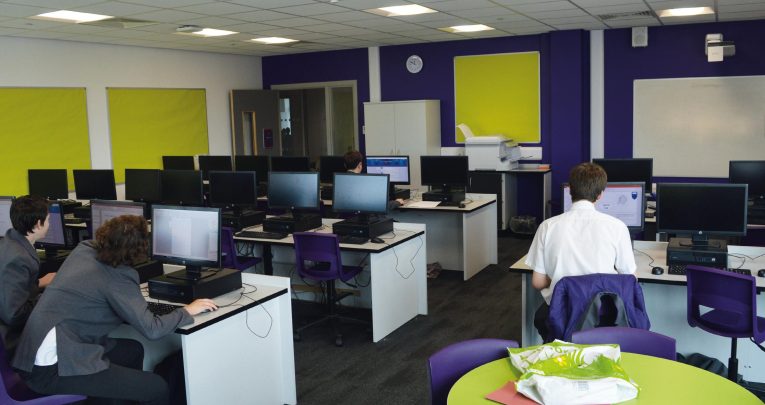
Rhyl High School’s new buildings place technology at the heart of modern learning, says head teacher Claire Armitstead

A rebuild project on the scale Rhyl High School has just undertaken brings a number of unique pressures and anxieties. As a headteacher rather than a builder, you tend not to expect many of these. When we ran our update meetings ahead of the £25 million redevelopment, I would be asked questions such as “What’s your vision for toileting?” Frankly, I’ve never had a vision for toilets, I just wanted my new school to stand up and provide the best possible learning environment for our students.
Developing a new school building is a once in a generation opportunity, which brings with it a huge level of accountability to make it work for the people who will be part of it every day. When you walk inside with them for the first time, however, and you see the scale of the achievement through their eyes, it makes you realise that all of the anxiety has been worth it.
With our new facilities, we now have a system that allows everyone equal access to technology across the school. We made sure that we have a ‘home base’ system: eight classrooms centred on a social space where students can use the school’s laptops to access our secure Wi-Fi system. This hub-style approach means that we’re truly starting to see technology becoming a central part of life at Rhyl High School.
Crucially, this doesn’t mean gimmicky new technology is important, but rather that there is parity of access for all, independent of their background. Before we moved, our students had limited access due to the funding restrictions of our school. The new building has given them an equality of access they have never previously had. With this, it is also possible to build ambition.
Despite all the bells and whistles, it’s not the technology that really engages our pupils in learning, it’s still the teacher. When, as teachers, we acknowledge that we’re the most important person in the classroom to those students, we feel a lot of responsibility – but we don’t hide behind technology, we connect the children with it. That’s the aim of the school’s hub and spoke style design: making that access to technology and ability to share ideas and inspiration a central part of everyday life for our students.
Work in progress
The technology our new facilities offer is also positively affecting the wider school environment. Our new building management system allows the school’s lighting, heating, ventilation and water supply to be centrally managed. This means our site manager can monitor the temperatures in every classroom and lighting throughout the school to make sure it’s consistently at the optimum level for our students to thrive in.
When we picked up the keys to our new home, familiarisation was essential for the staff. We had to accept that we were all functioning at different levels of understanding, so we’ve held ongoing training programmes at three levels: a ‘novice session’, introducing the features to everyone; an ‘intermediate session’, taking staff through the interactivity of the systems; and an ‘advanced session’ which let the staff get really hands-on. Since we started, we haven’t had a single member of staff who hasn’t got on board with the new systems, regardless of their background and experience. This collective grasp of our new approach is absolutely vital to ensuring that our students fully benefit from the facilities we’re now providing.
Of course, although these systems have put us in a fantastic place, we can’t stand still – the technology will keep changing. We have to keep our ears to the ground and make sure we don’t consider ourselves to be complete experts. We must listen to our students and have open conversations, asking them where they want to go next and how we can help them get there. This dialogue can help us to develop even more exciting areas of schools, and we’ve already begun to take steps in that direction.
Vocation, vocation
Our new facilities mean we can now offer a range of courses designed to give students the best development path possible in technology from conventional modern design and technology courses (like product design and graphics), to textiles, fashion and construction. The new technology department extends to a hairdressing school too, where we are working with the local college to help us deliver hair, beauty and nail technology to our students as part of our vocational offering within our purpose built facilities. The pupils taking this course receive a Level 2 BTECH qualification, which is equivalent to a GCSE.
We also use our vocational areas to engage students of all ages. Everyone learns in different ways, and this more practical approach often provides a route to success for the students that are more difficult to reach. By embracing the power of vocational education you can open the eyes of students – not just to the prospects of a particular profession, but to the routes to business and enterprise. This allows dreams to form and ambition to grow. We now have a vocational corridor with a hair and beauty room adjoined to a theory space, with interactive white boards, projectors, and laptops. There’s also a construction learning room, which opens out to a fully functional construction yard. This is set up so students can learn plastering, tiling and wallpapering skills, and landscaping and joinery techniques.
Currently, these facilities are for our 14 to 16 year olds, but we are exploring how we can offer this to under 11s from local primary schools and the wider community too, as a taster. We want our Rhyl High to be a true community school and that means welcoming everyone.
Amongst all of these changes, an important factor in education that often seems to be forgotten is that we’re all different, and we all learn in completely different ways. Students stuck in an environment that dictates one style of learning are never going to engage, be excited, or feel that they are achieving anything like their best. We want to open up as many routes to achievement as possible, because our role isn’t to be an exam factory. Our role is to get our students to love learning. When they do, they will have the confidence to try something new, challenge their own abilities and gain the resilience we all need for adult life. We want all our children to find their own pathway to being successful and brave adults that make a contribution to society.
About the author
Claire Armitstead is headteacher at Rhyl High School, which educates over 900 students aged 11-16 each year





